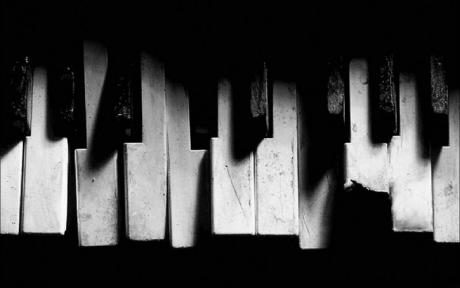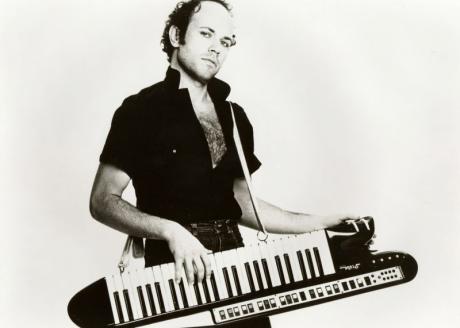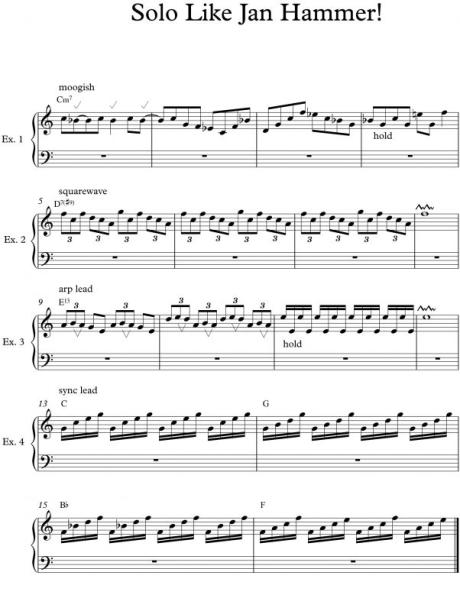Rockové klávesy - „Kytarová“ sóla Jana Hammera 2. díl
Welcome readers! This month I wanted to continue about playing guitar-like solos on keyboard. One of the early pioneers of this style of playing was Prague’s own, Jan Hammer. In the early 1970s, he joined the original lineup of the Mahavishnu Orchestra where he was one of the first

artists to play the Mini Moog synthesizer. Hammer along with Herbie Hancock, Chick Corea and a few others literally wrote the book on analog keyboard solos. Many of these solos had a lot of characteristics in common with guitar solos. I’ve come up with another examples below to help you get the feel.
Exercise 3 Arp 2600 like Joe
The Arp 2600 popularized by Joe Zawinul is the model for Exercise 3. Here we strike and hold the A on beats 1 and 3 and quickly use the pitch bend to go up and down to the original note. In bar 2 we use this technique on every beat. Only the first note is stuck while the pitch bend does
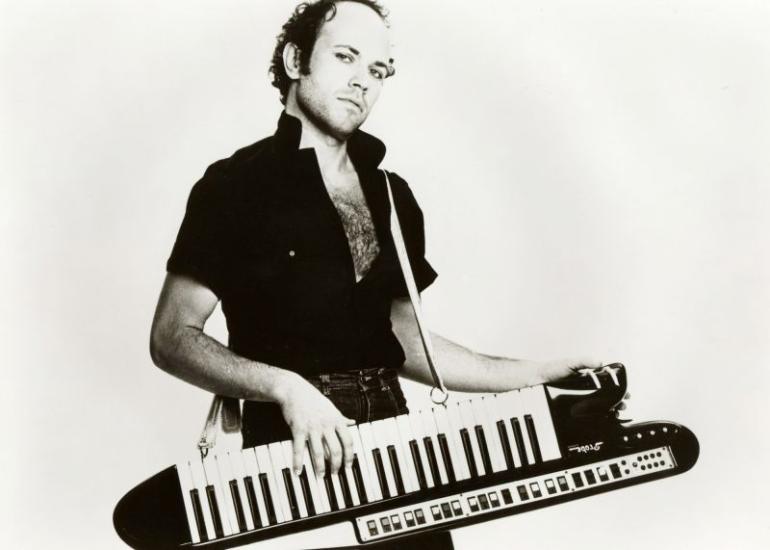
all the rest of the work. In bar 3 we use the hammer-on technique again holding the low E as the high one sounds ending again with an LFO shake, this time with a more intense saw wave. It also sounds great to change parameters like cutoff and resonance as you play to add expression. All the notes in Exercise 3 come from the E minor pentatonic scale (E, G, A, B, D, E)
Ex. 4 In sync
We use a sync synth sound for our last example. These sounds link 2 oscillators together in a way that produces a phasing sound. Here we play
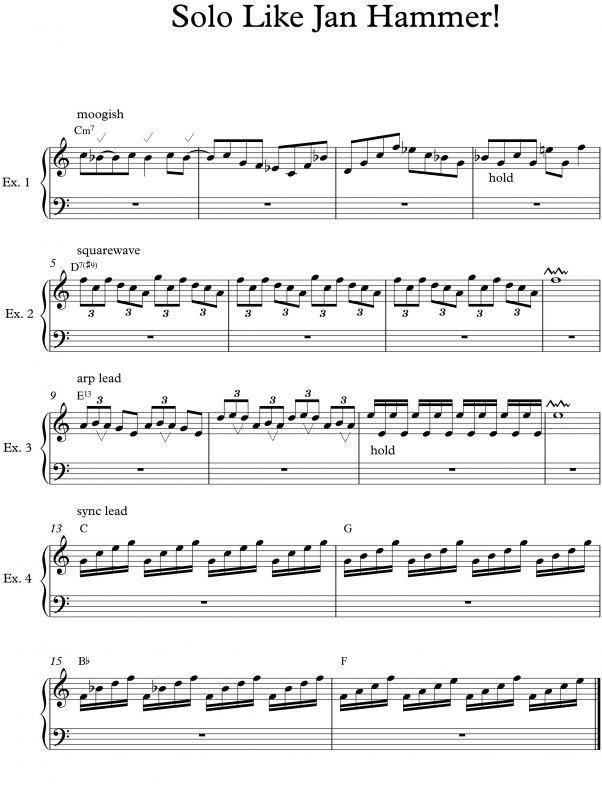
some quick arpeggios. We could also turn our arpeggiator on and just hold the chords, but I like the old fashion way. :-) During this exercise, I try to play most of the phrases legato while occasionally making a strong accent in a random place. The notes are just triadic arpeggios. In the 1st and 3rd bars the starting note is the 5th of the chord. On bar 2 and 4 the starting note is the tonic of the chord.
Glossary
Hammer-on effect: Kytaristům tento pojem jistě vysvětlovat nemusím, klávesistům možná ano. Zahrajeme jeden tón, přičemž ten následující vznikne pouze „přiklepnutím“ levé ruky na téže struně, aniž bychom znovu zahráli rukou pravou. Brian ve článku píše o napodobování této kytarové techniky při hře na monofonní syntezátor.
Dorian mode: Jedná se o dórský modus, tedy jednu z církevních stupnic, o kterých bylo, a jistě ještě bude, napsáno mnoho i v Muzikusu. Místo toho, abych vám vysvětloval jednotlivé intervaly mezi stupni, zkuste následující: Sedněte si k pianu či k jinému klávesovému nástroji a zahrajte postupně všechny bílé klávesy od D do D, ať už vzestupně nebo sestupně. Tím získáte dobrou představu o tom, jak dórská stupnice zní, a jaké intervaly se nacházejí mezi jednotlivými stupni. Transponovat ji pak můžete zcela libovolně.
